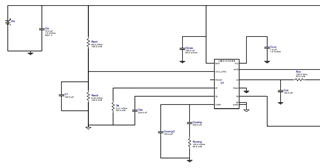Other Parts Discussed in Thread: LM3478,
Hi Niklas,
I have a couple of questions, I am going for a 4.7uf cap on SS pin to get a soft start of 500msec.
- Is there any max capacitance limit on SS pin ?
- Will this affect the RT pin bias resistor value or COMP pin network ?
- What is the value of fRT (typical) ?
- Would it be better to go with the high switching frequency with 500msec of soft start ?
Attached is the snap of Webench design that I have currently.
Please let me know.
Thanks..!!!



